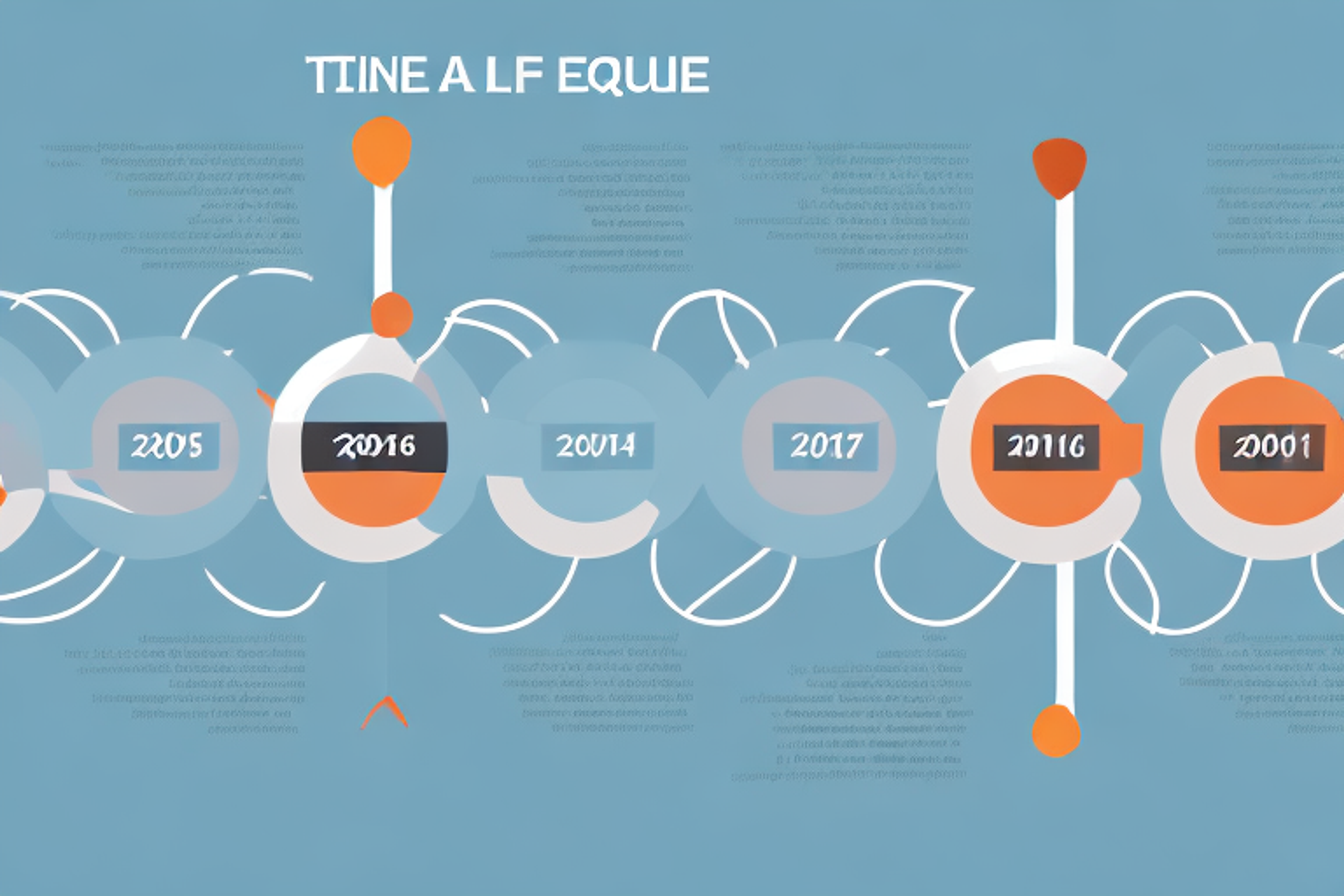The Private Equity Lifecycle From Start to End
Discover the complete private equity lifecycle from start to end in our latest article.
Posted April 10, 2025

Stay in the loop. Go places.
Join 100,000+ others and receive free resources, exclusive event invites, and personalized support to reach your goals.
Table of Contents
Private equity is the practice of investing in companies that are not publicly traded. The primary goal of private equity is to boost the value of these companies, and ultimately, generate a profit for investors. Whether you are an investor, an entrepreneur or a business owner, understanding the private equity lifecycle is essential to realize the benefits of this approach, as well as mitigate the associated risks. In this article, we take an extensive look at the private equity lifecycle, from the concept of private equity to the future outlook for the industry.
Understanding the Concept of Private Equity
Private equity investments involve investing in private companies with the aim of holding for a few years and selling for a profit. Since private companies are not publicly traded, investors can only invest in them through private equity firms. Private equity investors typically take a hands-on approach, offering guidance and expertise to improve the performance of the companies in which they invest.
Private equity firms typically raise funds from institutional investors, such as pension funds, endowments, and wealthy individuals. These funds are then used to acquire equity stakes in private companies. Private equity firms may also use leverage, or borrowed money, to increase their purchasing power and potentially increase returns.
Private equity investments can be risky, as they often involve investing in companies that are not yet profitable or have significant debt. However, they can also offer high returns for investors who are willing to take on the risk. Private equity investments also provide a way for companies to access capital and expertise that may not be available through traditional financing methods.
The Different Stages in the Private Equity Lifecycle
The private equity lifecycle begins with the identification of suitable investment opportunities. Once an opportunity is identified, the next step is due diligence. Due diligence involves a thorough examination of a target company’s financial and operational performance, management team, market dynamics and growth potential. If a target company passes due diligence, a transaction is structured, and negotiations commence.
After the transaction is completed, private equity firms focus on strengthening the company’s operations, management team, and finances to enhance its value. This process is known as operational improvement. During this stage, private equity investors work closely with the company’s management team to identify areas for improvement, streamline operations, and reduce costs. The primary objective is to position the company for long-term growth and profitability.
Once the company is sufficiently improved, and the private equity firm has achieved its investment objectives; it is time to exit the investment. Exit options include the sale of the company, initial public offering (IPO), or refinancing. The proceeds from the exit are then distributed to investors, and the private equity firm moves on to the next investment opportunity.
It is important to note that the private equity lifecycle can vary in length, depending on the investment objectives and the company's growth potential. Some investments may take several years to reach the operational improvement stage, while others may require a shorter timeframe. Additionally, the exit strategy may also be influenced by market conditions and the overall economic climate. Private equity firms must carefully consider these factors when evaluating investment opportunities and developing their investment strategies.
The Role of Venture Capitalists in Private Equity
Venture capitalists (VCs) are a subset of private equity investors who focus on early-stage companies with high growth potential. VCs invest in startups, usually in exchange for an equity stake in the company. Unlike traditional private equity investments, VCs focus on companies that are in their early stages of development and require more substantial investments to get off the ground.
VCs play a critical role in the startup ecosystem by providing not only financial support but also strategic guidance and mentorship to the companies they invest in. They often have a vast network of industry contacts and can help startups connect with potential customers, partners, and investors. VCs also bring a level of expertise and experience to the table, having worked with numerous startups in the past.
However, the relationship between VCs and startups can be complex, and it's essential for both parties to have a clear understanding of their expectations and goals. VCs typically have a timeline for their investments and expect a return on their investment within a specific timeframe. Startups need to be aware of this and ensure that they are aligned with their investors' goals to avoid any conflicts down the line.
The Importance of Due Diligence in Private Equity
Due diligence is a crucial stage of the private equity lifecycle. It involves a detailed examination of a target company’s financial and operational performance, management team, market dynamics and growth potential. This stage is essential as it helps private equity firms identify potential risks and returns associated with a particular investment opportunity. A thorough due diligence process can save private equity firms from making bad investment decisions.
The Different Types of Private Equity Deals
Private equity deals come in different shapes and sizes. The most common types of private equity deals include leveraged buyouts (LBOs), venture capital investments, growth equity, mezzanine financing, and distressed debt. Leveraged buyouts involve acquiring a controlling stake in a company using a combination of equity and debt financing. Venture capital investments are focused on early-stage companies, growth equity involves investing in established companies to support their growth initiatives, while mezzanine financing provides debt financing for middle-market companies. Distressed debt, on the other hand, involves investing in companies that are financially distressed and in need of capital to avoid bankruptcy.
How to Structure a Private Equity Investment
Structuring a private equity investment usually involves negotiating the terms of the investment, including the valuation of the company, the amount to be invested, the level of control the investor will have, the anticipated returns, and the exit strategy. The structure of a private equity investment varies depending on the size of the investment, the type of investment, and the nature of the company.
The Risks and Rewards of Investing in Private Equity
Investing in private equity can be a rewarding but risky proposition. On the one hand, private equity investments can generate substantial returns, provide an opportunity to diversify one’s investment portfolio, and offer a chance to invest in high-growth companies that are not available to the public markets. On the other hand, private equity investments are illiquid, subject to market risks, and require a substantial investment. The risks and rewards associated with private equity investments require careful consideration before investing.
The Impact of Economic Conditions on Private Equity Investments
The private equity industry is heavily influenced by economic conditions, market dynamics, and investor sentiment. During an economic downturn, private equity investments tend to perform poorly due to low demand, decreased access to capital, and reduced market valuations. Conversely, in bull markets, private equity investments tend to perform well due to increased demand, capital liquidity, and strong market valuations.
Case Studies: Successful Private Equity Investments
Several private equity investments have been successful over the years. One example is the 2006 acquisition of Hertz by a private equity consortium led by Clayton, Dubilier & Rice. The private equity consortium acquired Hertz for $15 billion and shortly after the acquisition, the company’s earnings increased by over 40%. The consortium successfully exited the investment through an IPO, generating substantial returns for investors.
Key Metrics for Measuring the Success of Private Equity Investments
The success of a private equity investment is measured based on several metrics, including return on investment (ROI), internal rate of return (IRR), and multiple of invested capital (MOIC). ROI represents the income generated on an investment divided by the amount of capital invested, while IRR measures the annualized rate of return on an investment over its life. MOIC is the ratio between the amount invested and the total proceeds from the exit. These metrics are used to evaluate investment opportunities, as well as to measure the success of an investment.
Exit Strategies for Private Equity Investments
A successful private equity investment culminates in an exit strategy. The goal of an exit strategy is to sell the private equity firm’s shares in a company and realize the profits. Exit strategies include an initial public offering, a sale to another company, a recapitalization, or a dividend recapitalization. The choice of an exit strategy depends on factors such as the size of the investment, the nature of the company, market conditions, and the type of investors.
How to Choose the Right Private Equity Firm for Your Investment Needs
Choosing the right private equity firm is critical to realizing the benefits of private equity investments. When choosing a private equity firm, investors should consider factors such as the firm’s investment track record, industry expertise, investment style, fees, and the quality of the firm’s team. It is also critical to understand the firm’s investment philosophy, the types of companies it invests in, and its exit strategy.
Trends and Future Outlook for the Private Equity Industry
The private equity industry has experienced steady growth over the years, driven by increased investor demand, low-interest rates, and robust fundraising. The industry is expected to continue growing as investors increasingly seek higher returns from alternative investments. In the future, private equity firms are likely to focus on areas such as technology, healthcare, and renewable energy.
Conclusion
The private equity lifecycle is a complex process with many moving parts. Whether you are an investor or an entrepreneur, understanding the private equity lifecycle is essential to realize the benefits of this approach, as well as mitigate the associated risks. To succeed in private equity investing, it is critical to consider factors such as investment opportunities, due diligence, types of private equity deals, structuring of investments, risks, rewards, exit strategies, and choosing the right private equity firm. By following these steps and keeping up with industry trends and future outlook, private equity investors can generate substantial returns and meet their investment objectives.











